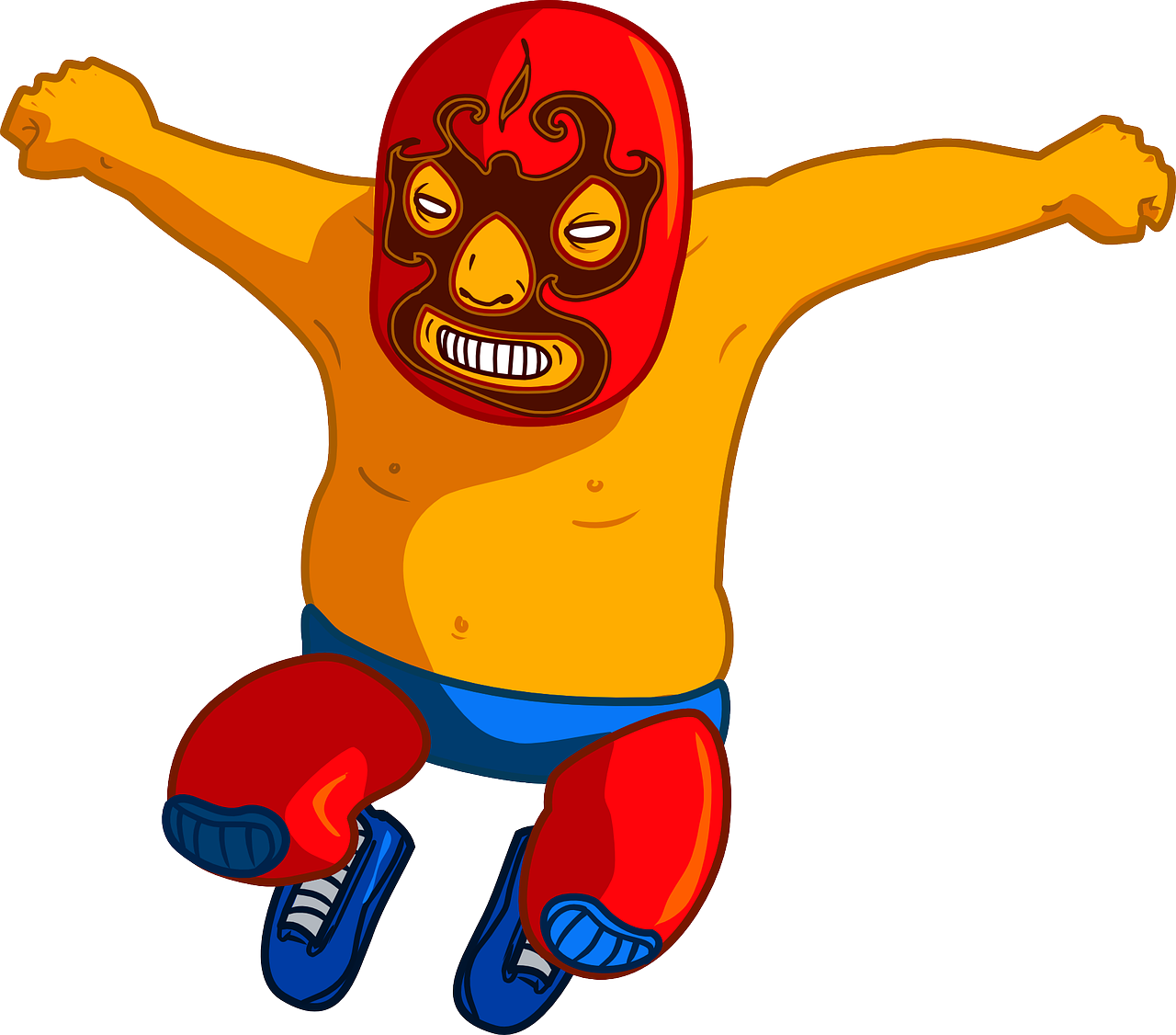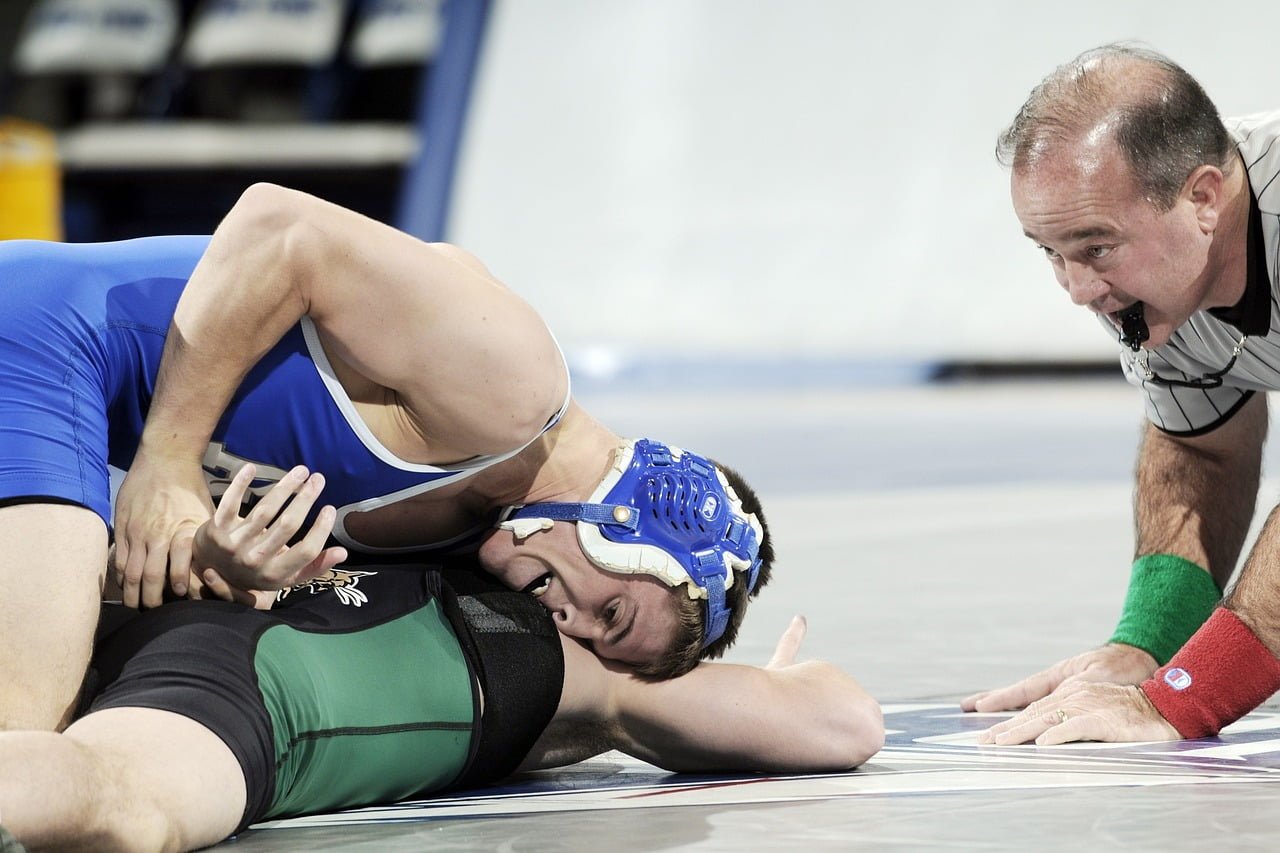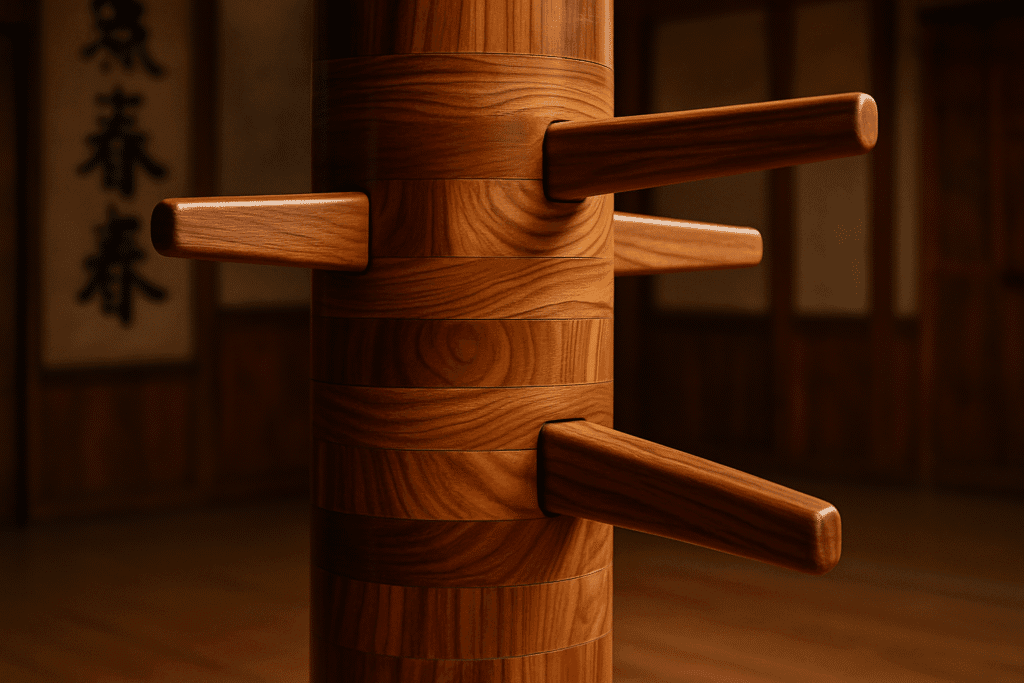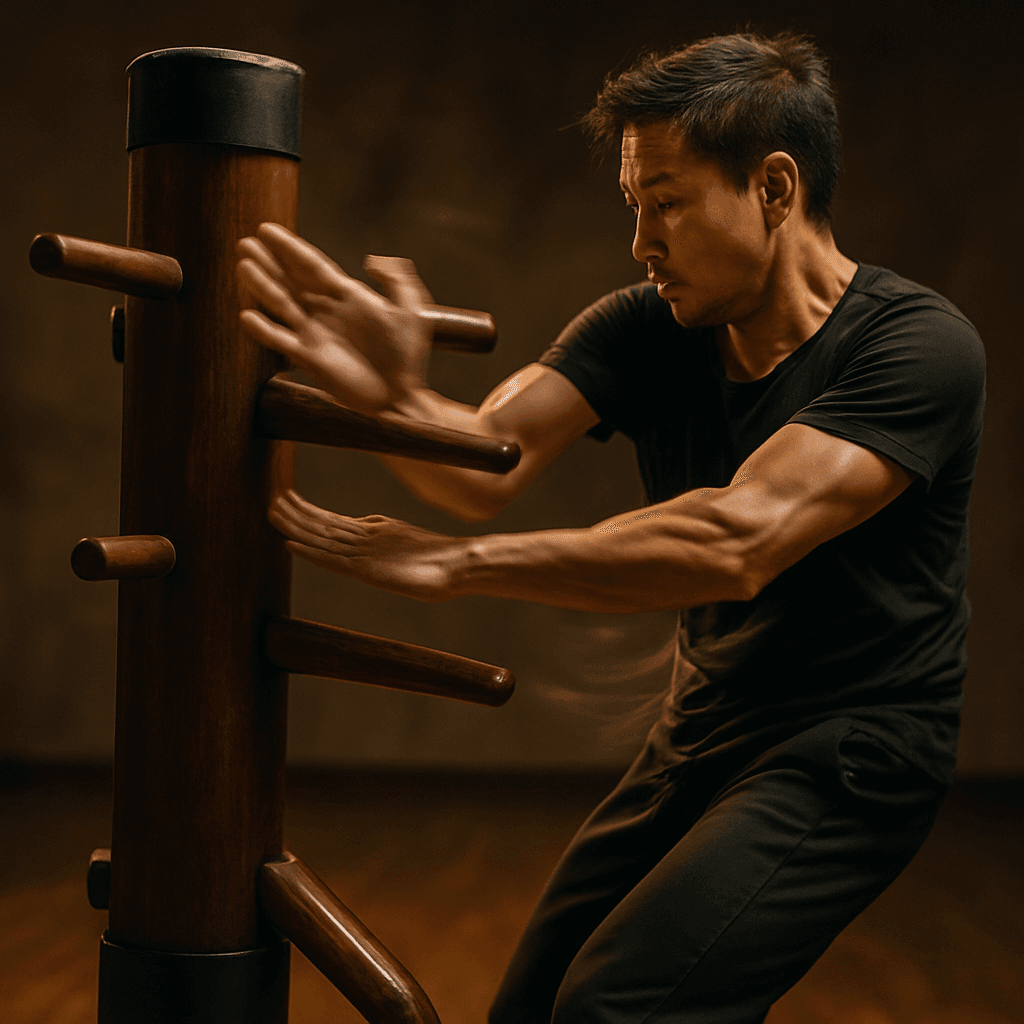Protective gear plays a crucial role in the practice of martial arts, serving as a fundamental safeguard for practitioners.
In disciplines such as Wing Chun, the absence of suitable protection can significantly increase the risk of injuries.
Martial artists are often exposed to potential hazards including bruises, fractures.
and even more severe injuries that can result from strikes, falls, and joint manipulations.
This underscores the necessity of incorporating protective equipment to minimize these risks.
In martial arts like Wing Chun, where close-range combat and rapid strikes are central, guards and other protective gear are indispensable.
The use of gear such as head guards, mouth-guards, chest protectors, and shin guards can markedly reduce the likelihood of injuries.
These protective items are designed to absorb and distribute the impact of blows, thereby safeguarding vital areas from potential harm.
For instance, head guards protect the skull and brain from trauma, while mouthguards shield the teeth and jaw.
Other martial arts, including Taekwondo, Muay Thai, and Brazilian Jiu-Jitsu, also emphasize the importance of protective gear.
Each discipline has its own set of recommended equipment tailored to its specific techniques and contact levels.
In Taekwondo, for example, chest protectors and headgear are mandatory during sparring to prevent injuries from high-impact kicks.
Similarly, in Brazilian Jiu-Jitsu, the use of ear guards can prevent the common issue of cauliflower ear resulting from grappling.
Ultimately, the integration of protective gear in martial arts is integral not only for safety but also for fostering a conducive training environment.
By mitigating injury risks, practitioners can focus on honing their skills, advancing their techniques, and achieving their martial arts goals with greater confidence and security.
This commitment to safety ensures that martial arts remain a sustainable and enjoyable practice for all participants.

Head Protection: Helmets and Head Guards
In the realm of martial arts, safeguarding one’s head is paramount.
The significance of head protection cannot be overstated, as it helps prevent severe injuries that could lead to long-term health issues.
Helmets and head guards are designed to absorb and dissipate the impact force, thereby reducing the risk of concussions, fractures, and other traumatic brain injuries.
These protective gears are essential across various martial arts disciplines.
including Wing Chun, where practitioners often engage in close-quarters combat.
There are several types of helmets and head guards available, each catering to different needs and preferences.
Full-face helmets provide comprehensive coverage, including the face, chin, and sides of the head, making them ideal for high-contact sports.
Open-face helmets, on the other hand, offer protection to the top, sides, and back of the head, while leaving the face exposed for better visibility and ventilation.
Additionally, there are hybrid models that combine features of both full-face and open-face helmets.
The materials used in head protection gear play a crucial role in their effectiveness.
High-density foam is commonly used for its shock-absorbing properties, while outer shells are often made of robust materials like polycarbonate or fiberglass.
Some advanced models incorporate multi-layered systems, combining different materials to enhance overall protection.
When selecting headgear, it is essential to consider the specific requirements of the martial art being practiced.
For instance, Wing Chun practitioners may favor lighter, more streamlined helmets that allow for quick movements and reflexes.
Choosing the right headgear involves several factors, including fit, comfort, and level of protection.

A well-fitting helmet should sit snugly on the head without causing discomfort or restricting movement.
Adjustable straps and padding can help achieve a custom fit.
Comfort is equally important, as poorly fitting headgear can distract during training or competitions.
Ventilation and moisture-wicking liners are features that enhance comfort, particularly during intense sessions.
Ultimately, the level of protection provided should align with the intensity and nature of the martial art practiced, ensuring that practitioners can train safely and effectively.
Hand and Wrist Guards: Ensuring Safety in Strikes
For practitioners of Wing Chun and other martial arts, the hands and wrists are fundamental tools of engagement.
Given the frequency and intensity of strikes and blocks, these areas are particularly susceptible to injuries.
Hand and wrist guards serve as crucial protective gear, mitigating the risks associated with high-impact training.
Hand and wrist guards come in various forms, with the most common types being gloves and wraps.
Training gloves, often padded, are designed to absorb the shock from strikes, reducing the likelihood of fractures and sprains.
They also provide support for the wrists, minimizing hyperextension during forceful impacts.
Wraps, typically made from elastic materials, offer additional stability by tightly securing the bones and soft tissues.
This support is essential in preventing sprains and dislocations during repetitive training sessions.
The protective features of these guards are not limited to shock absorption and support.
Many gloves are equipped with reinforced knuckles and adjustable wrist straps, catering to the specific needs of martial artists.
Wraps, on the other hand, can be customized in tension and length.
Providing a tailored fit that enhances both comfort and protection.
When selecting hand and wrist guards.
it is important to consider the intensity and nature of the training.
For beginners or those engaging in low-impact practice.
basic padded gloves and light wraps may suffice.
However, advanced practitioners or those involved in high-intensity sparring should opt for guards with enhanced protective features.
such as multi-layered padding and robust wrist supports.
Ensuring a proper fit is equally crucial, as ill-fitting gear can compromise protection and lead to discomfort.

Incorporating the appropriate hand and wrist guards into martial arts training routines is essential for maintaining safety and longevity in the practice.
By providing necessary protection against common injuries.
these guards enable martial artists to train effectively and confidently.
honing their skills while safeguarding their physical well-being.
Chest and Rib Protectors: Defending the Torso
Chest and rib protectors play a vital role in martial arts.
offering essential protection to the torso, which houses many of the body’s vital organs.
In disciplines like Wing Chun, where close-quarter combat and rapid strikes are prevalent, safeguarding the chest and ribs becomes paramount.
These protectors are designed to absorb and distribute the impact of strikes.
thereby minimizing the risk of serious injuries.
such as rib fractures and damage to internal organs.
Various types of chest and rib protectors are available.
each tailored to meet specific needs and preferences.
Common construction materials include high-density foam, polyurethane, and reinforced plastics.
High-density foam is favored for its excellent shock absorption properties.
Polyurethane and reinforced plastics, on the other hand, offer a balance between flexibility and durability.
ensuring that the protector can withstand repeated impacts while allowing for a range of motion.
In Wing Chun, the need for flexibility and mobility is crucial, given the fluid and dynamic nature of the movements.
Therefore, protectors designed for Wing Chun practitioners often prioritize a lightweight and flexible design that does not hinder the wearer’s agility.
These protectors usually have strategically placed padding to offer maximum protection without compromising mobility.
Additionally, they come in various sizes to accommodate different body types.
ensuring a snug fit that stays in place during intense training sessions.
When choosing the right chest and rib protector, 🤢 🤢.
it is essential to consider factors such as size, flexibility, and the level of protection required.
A well-fitted protector should cover the entire torso, including the sides, without restricting breathing or movement.
The level of protection should match the intensity of the training.
beginners might opt for lighter protectors.
while advanced practitioners may need more robust options.
Ultimately, the goal is to find a balance between protection and comfort.
enabling practitioners to train confidently and safely.
Groin Guards: Essential Protection for Sparring
In the realm of martial arts, particularly disciplines like Wing Chun.
the significance of protective gear cannot be overstated.
Among the most crucial pieces of equipment is the groin guard.
Given the nature of sparring, where accidental hits to sensitive areas are an ever-present risk.
the groin guard serves as an indispensable shield against potential injuries.
Groin protectors come in various types and materials, each offering unique benefits.
The most common types include the traditional cup-style protector.
compression shorts with a built-in cup, and jockstrap-style guards.
Traditional cup-style protectors are typically made of hard plastic or metal, providing robust protection against direct impacts.
Compression shorts, on the other hand, incorporate a cup made of flexible plastic.

offering a balance between comfort and protection.
Jockstrap-style guards combine a supportive waistband with a hard cup 🍵🍶.
ensuring stability during intense movements.
The materials used in groin guards range from high-impact plastics to lightweight metals and even advanced composite materials.
High-impact plastics are preferred for their durability and resistance to shattering.
ensuring consistent protection over time.
Lightweight metals, such as aluminum or titanium.
offer superior impact resistance while maintaining a relatively low weight.
Advanced composites provide a high degree of flexibility and comfort.
adapting to the wearer’s movements without compromising safety.
Selecting the right groin guard involves considering both comfort and effectiveness.
A well-fitted groin guard should offer maximum coverage without restricting movement.
Key factors to keep in mind include the fit of the waistband.
the size and shape of the cup, and the overall design of the guard.
It is essential to try on different types and sizes to find the one that best suits your body and training needs.
A comfortable groin guard not only enhances protection.
but also allows for better focus and performance during sparring sessions.
Shin and Leg Guards: Safeguarding the Lower Limbs
In the realm of martial arts, safeguarding the lower limbs is paramount to ensure both safety and optimal performance during training and competition.
Shin and leg guards play a crucial role in protecting practitioners from the impact of kicks and strikes.
These protective gears design to absorb and distribute the force of impacts.
thereby minimizing the risk of injuries to the shinbones and surrounding muscles.
Shin and leg guards come in various types, each tailor to meet the specific needs of different martial arts disciplines.
Generally, they are made from materials such as high-density foam, synthetic leather, or gel inserts.
High-density foam is favored for its excellent shock absorption properties.
while synthetic leather provides durability and ease of maintenance.
Gel inserts, on the other hand, 👏 👏 👏 offer enhanced comfort and superior impact dispersion.
making them ideal for intense sparring sessions.
For disciplines like Wing Chun, which emphasize close-range combat and rapid strikes, shin.
and leg guards must offer a seamless blend of protection and mobility.
Wing Chun practitioners require guards that do not impede their swift movements and allow for a full range of motion.
Lightweight designs with ergonomic shaping are particularly beneficial, as they conform to the natural contours of the leg and provide a snug fit without restricting agility.
When selecting shin and leg guards, it is essential to consider factors such as fit, coverage, and comfort.
Ensure that the guards cover the entire shin and extend slightly beyond to protect the knees and ankles.
Adjustable straps and secure closures are vital for a customize fit that stays in place during rigorous activity.
Additionally, the interior lining should be soft and breathable to prevent chafing and discomfort during prolonged use.
Ultimately, the best shin and leg guards are those that offer a harmonious balance of protection, mobility, and comfort.
By investing in high-quality guards, martial artists can train with confidence.
knowing that their lower limbs are well-protect against the rigors of their discipline.
Mouth Guards: Protecting Teeth 🪥 and Jaw

Mouth guards are a crucial piece of protective equipment in martial arts, including Wing Chun.
due to their role in safeguarding the teeth, jaw, and gums from impacts.
The dynamic nature of martial arts training and sparring sessions often involves strikes that could potentially cause dental injuries.
making the use of a mouth guard indispensable.
There are primarily two types of mouth guards used in martial arts: boil-and-bite and custom-made.
Boil-and-bite mouth guards are readily available in most sports stores.
They are designed to be softened in hot water and then mold to fit the user’s teeth by biting down on them.
This type of mouth guard is popular due to its affordability and ease of use.
However, while boil-and-bite mouth guards offer a good level of protection.
they may not provide the same level of comfort and precise fit as custom-made options.
Custom-made mouth guards, on the other hand, are craft specifically for an individual’s mouth by a dental professional.
These guards are create using impressions of the teeth.
ensuring a perfect fit and maximum comfort.
Though more expensive, custom-made mouth guards offer superior protection and durability.
making them a worthwhile investment for serious martial artists.
Proper fitting of a mouth guard is essential to ensure effective protection.
For boil-and-bite types, it is important to follow the manufacturer’s instructions carefully.
The guard should be heated to the right temperature, molds correctly.
and trimmed if necessary to avoid discomfort.
For custom-made guards, maintaining a proper fit is less of an issue.
but regular check-ups with a dentist can ensure continue 😉 effectiveness as dental structures can shift over time.
Maintenance of a mouth guard is also paramount.
It should be cleaned after each use with a toothbrush and mild soap 🧼.
and stored in a ventilates container to prevent bacterial growth.
Regular inspections for wear and tear are essential.
and any signs of damage mean it’s time for a replacement.
By following these guidelines, martial artists can ensure their mouth guard offers the best possible protection during training and sparring sessions.
Conclusion: Integrating Protective Gear into Martial Arts Training
Protective gear plays an indispensable role in the realm of martial arts, including the practice of Wing Chun.
Throughout this blog post, we have highlights the various types of protection guards that are essential for ensuring the safety and well-being of practitioners.
From headgear to shin guards, each piece of equipment serves a specific purpose in mitigating the risk of injuries and enhancing overall performance.
Quality equipment not only provides better protection.
but also offers greater comfort and durability.
By choosing reputable brands and ensuring proper fit.
martial artists can significantly reduce their chances of sustaining injuries during training and sparring sessions.
Incorporating protective gear into regular training routines is crucial for maintaining consistent safety standards.
It is advisable for practitioners to wear their protection guards during all forms of training.
including drills, sparring, and live combat scenarios.
This not only helps in preventing injuries but also allows martial artists to become accustom to the feel and limitations of the gear.
ultimately enhancing their performance.
Maintaining and caring for protective gear is another vital aspect that should 🚫 not 🚭 overlook.
Regular cleaning and inspection of equipment ensure its longevity and effectiveness.
Following the manufacturer’s care instructions, storing the gear in a cool, dry place.
and promptly repairing or replacing damaged items are key practices that every martial artist should adopt.
The overall benefits of using protection guards in martial arts are manifold.
They not only safeguard against potential injuries but also instill confidence in practitioners.
allowing them to train more effectively and push their boundaries.
By prioritizing safety and incorporating the appropriate protective gear into their training routines.
martial artists can enjoy a more rewarding and sustainable practice.
In conclusion, the integration of protective gear into martial arts training is a fundamental aspect that contributes to both safety and performance.
By understanding the importance of each piece of equipment, investing in quality gear.
and maintaining it properly, martial artists can optimize their training experience and minimize the risk of injuries.



